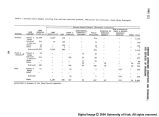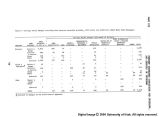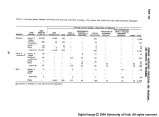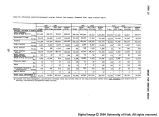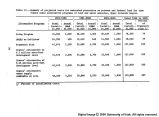| OCR Text |
Show PART III CURRENT WATERSHED CONDITIONS AND PROBLEMS, AND EFFECT OF PROBLEMS Erosion, flood, and sediment deposition are the most significant problems in terms of damage to watersheds. Other problems include fire and salinity. The current conditions and effect of each of these prob- lems are discussed in turn below. The introduction covers the general assessment of the problem and is followed by more specific discussions. Erosion General conditions and effects Arid and semiarid lands are particularly vulnerable to erosion be- cause of a combination of factors such as low precipitation, immature soils, unfavorable topography and sparse vegetation. Any disturbance of the natural balance among these factors may change the environment from one of general stability with some erosion on the steeper slopes balanced by net aggradation along the drainage courses and on the valley bottoms to one of valley trenching, head cutting, and related forms of erosion. The more frail the lands, the more delicate and easily distributed is the natural balance among the various environ- mental factors. According to most historical accounts, the American pioneers found broad pristine valleys with well-grassed bottoms that were naturally irrigated by runoff. Stream channels in these valleys were generally small or nonexistent. Occasional gullies and badland areas did mar the scene, but they were the exception. This comparatively stable environ- ment was then subjected to ever-increasing grazing pressures as settle- ment progressed and as numbers of livestock doubled and redoubled. By the end of the nineteenth century only areas remote from any source of water for livestock were entirely free from the effects of this indis- criminate land use. Runoff increased progressively during this period until small rivulets forming on the hill slopes merged in their downward path to form erosive torrents that concentrated along stock trails, roadways, or shallow channels underlain by alluvium. Local scour soon produced vertical overflows called headcuts that migrated upstream, leaving behind comparatively deep, narrow gullies bordered by barren terrace surfaces that, prior to the onset of erosion had been fertile, produc- tive flood plains. Causes of accelerated erosion must be understood before proposed solutions to the problem can be corrected. Several principal causes for this current period of general erosion are: |



































































